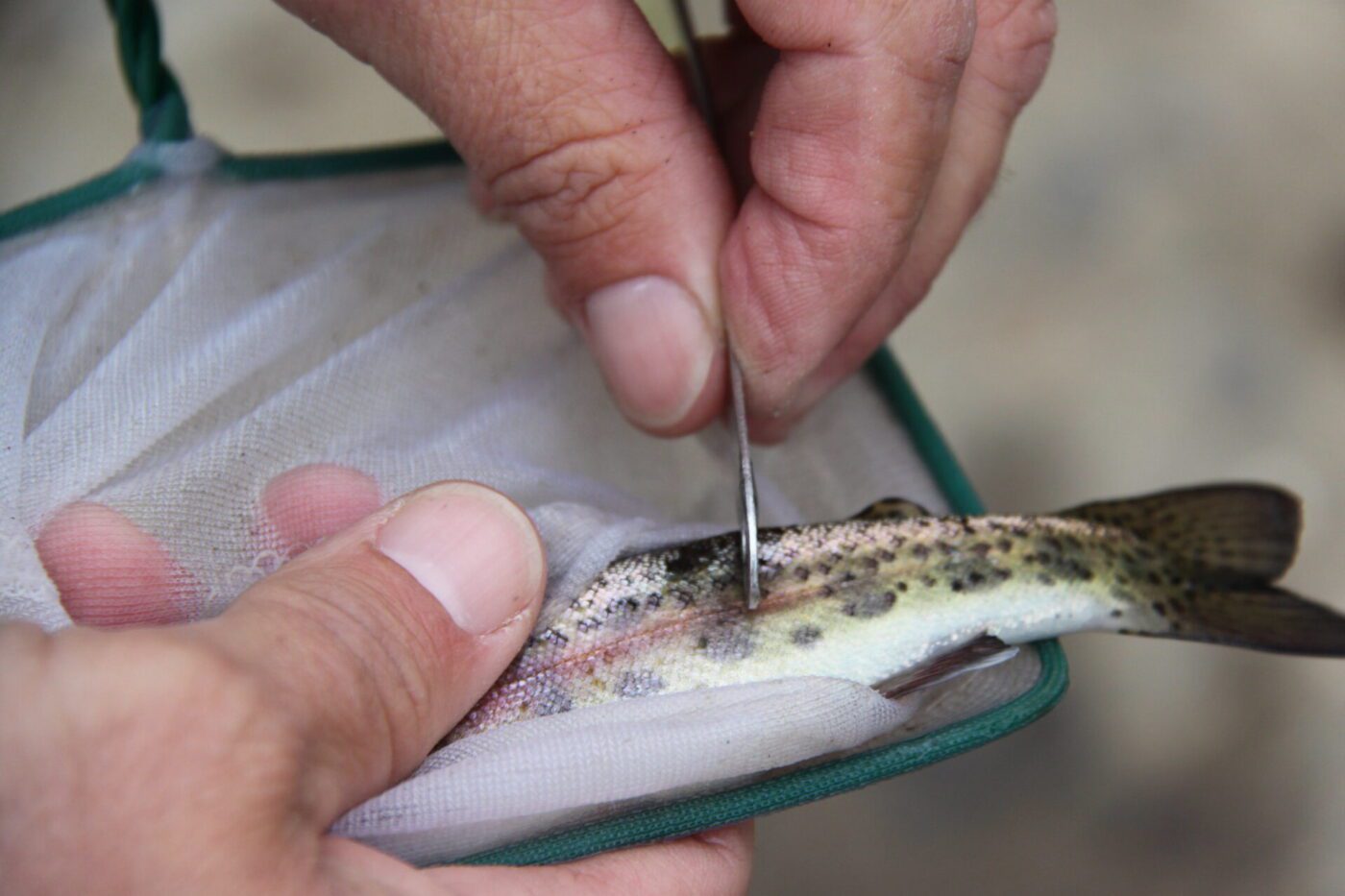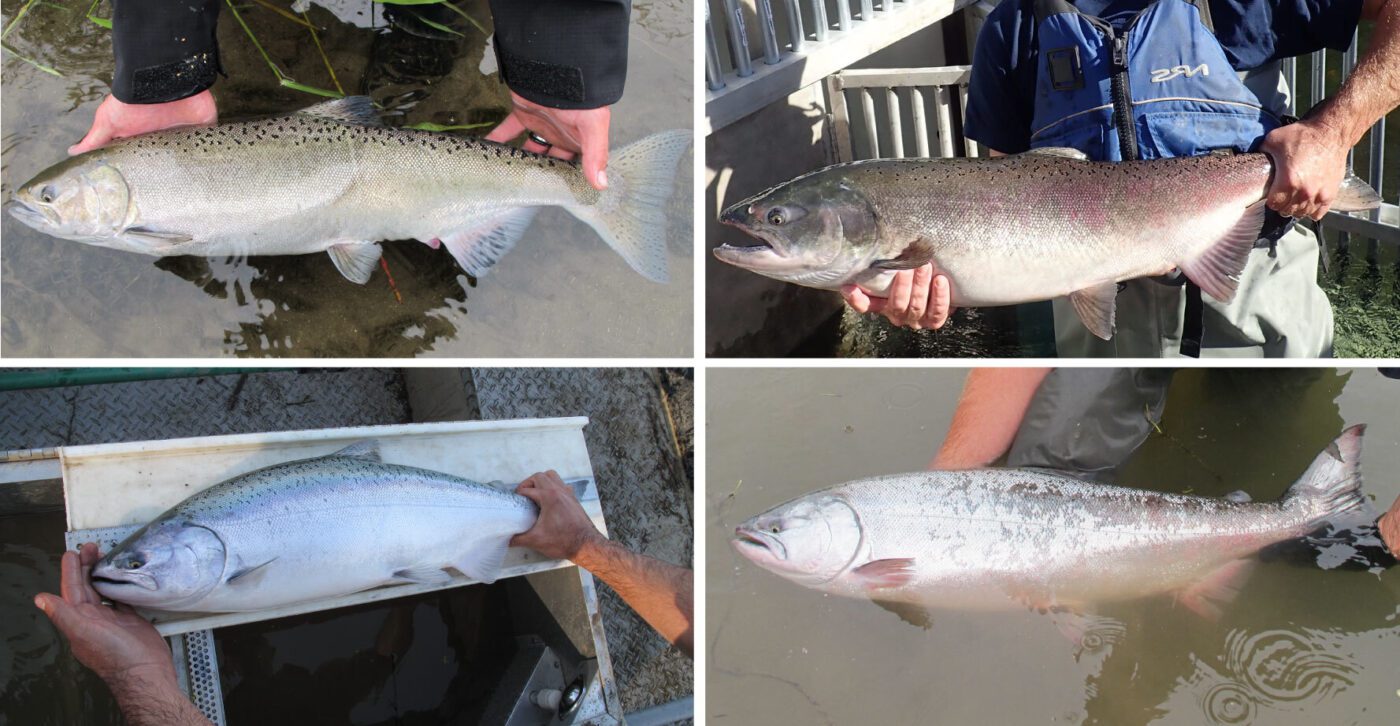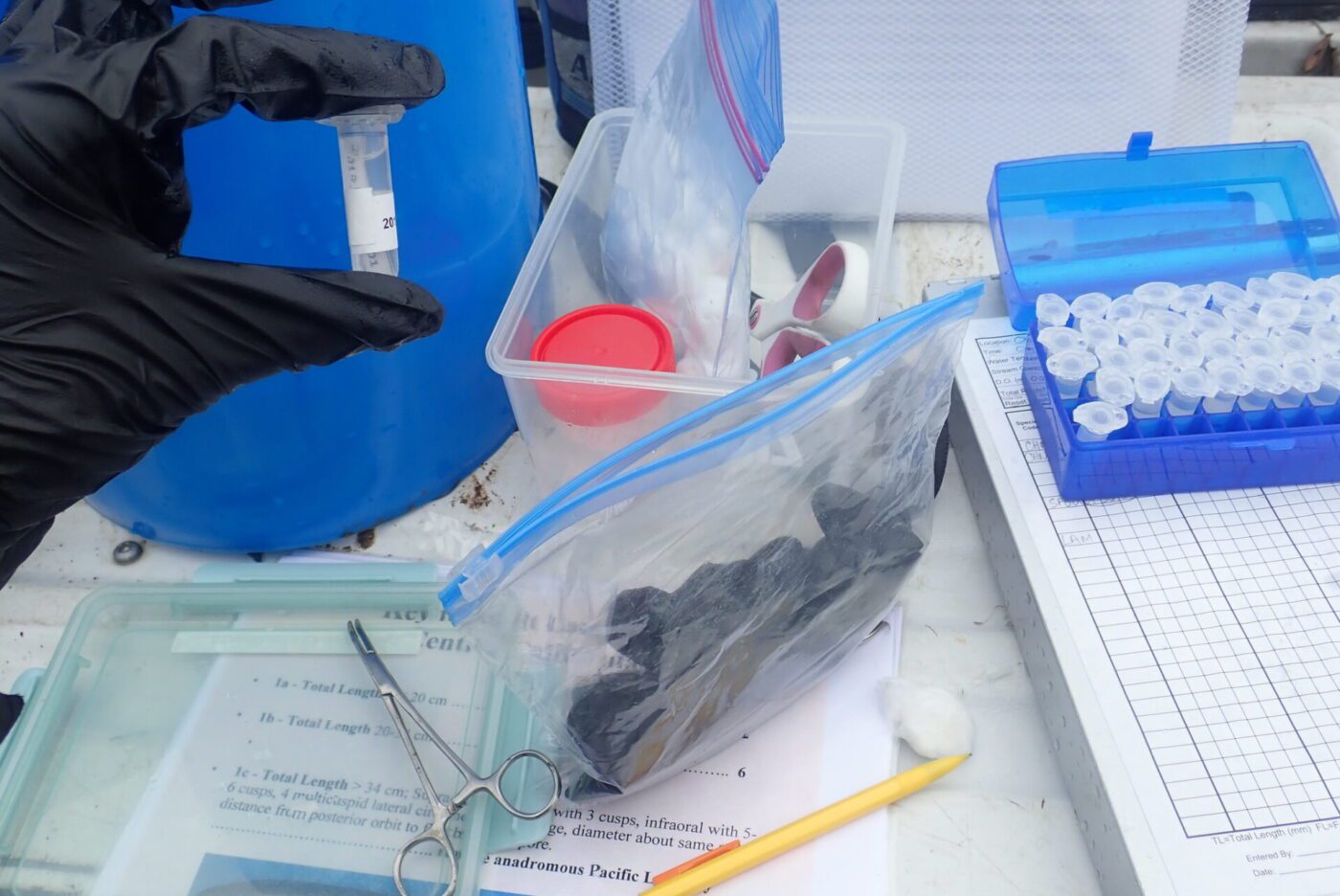Monday November 6, 2023

Perhaps the most essential skill for any field biologist is the ability to distinguish between the different species they are studying. Of course, this is often easier said than done, and things can get even more granular when distinguishing between groups within species, such as the four different runs of Chinook salmon (Oncorhynchus tshawytscha) in the rivers of California’s Central Valley. Two of these – winter- and spring-run – are listed under the Endangered Species Act (ESA) as endangered and threatened, respectively, but even the most seasoned biologist would not be able to visually distinguish them from one another, nor from unlisted fall- and late-fall-run fish. It’s in cases like this when the gold standard of species ID – genetics – becomes essential. However, digging into the DNA of fish means sending samples to the lab and waiting days for results. Or at least that was the way it worked until the advent of CRISPR, which may offer a means of placing the power of a molecular laboratory in the pocket of a field biologist. Recently, a team of researchers led by the California Department of Water Resources published the results of their attempt to use this remarkable technology to identify Chinook salmon runs in the field (Baerwald et al. 2023), and their results paint a promising picture for the future of field-based molecular identification methods.

CRISPR stands for Clustered Regularly Interspace Short Palindromic Repeats and is actually a defense mechanism used by bacteria to detect and destroy invading viruses. This mechanism can be hijacked by enterprising scientists for a variety of purposes, including gene editing, and the detection of pathogens. In essence, CRISPR can be used like the “Find” function in Microsoft Word, but instead of locating a specific word, it finds specific sequences of DNA. Once it finds its target, it can then function like the “Cut” command, cleaving out the sequence. In particular, Cas13 – a type of protein coded for in the CRISPR DNA sequences – is useful for detecting, binding to, and cutting target sequences. This makes them very useful for developing tests to identify sequences of interest, and these tests can be sensitive enough to detect a single molecule of RNA or DNA. This mechanism was developed into a detection platform known as SHERLOCK, which stands for Specific High-sensitivity Enzymatic Reporter UnLOCKing. Briefly, this approach works by having the Cas13 proteins target the desired sequence and then cut it along with any single-stranded RNA molecules that are added to the reaction. By adding RNA molecules attached to a fluorescent marker, the reaction produces a visible signal when the target sequence is detected.

Adult Chinook belonging to different runs.
Though originally created for diagnostics in medical clinics, SHERLOCK has begun to be applied to ecological studies, including the identification of ESA-listed fish species such as the threatened delta smelt (Hypomesus transpacificus). Taking things a step further, the researchers behind this recent study sought to apply it to distinguish between the different runs of Chinook salmon. Searching through numerous sequences failed to identify any single genetic difference that would be diagnostic for all four runs, so the researchers instead created two assays to be run in sequence. The first was designed to distinguish between the early (winter- and spring-run) and late (fall- and late-fall-run) migrating fish based on a genetic region associated with those patterns. The second was focused on distinguishing between the winter- and spring-runs, both of which are listed under the ESA and therefore of high priority for managers to identify. They tested these SHERLOCK assays in the laboratory and compared outputs to those provided by a commonly used but more time-consuming practice called quantitative polymerase chain reaction (qPCR). They also tested the new SHERLOCK assays in the field using mucus swabbed from juvenile Chinook salmon. Results showed that the SHERLOCK assays are highly sensitive and accurate, and both assays could be completed and provide information on the run type of an individual fish in less than an hour. The first assay was over 95% accurate in its ability to distinguish between early and late migratory types, and the second assay was 99% and 86% accurate in its ability to identify winter- and spring-run, respectively. Importantly, no fish were misassigned to the wrong run. Rather, some simply failed to amplify, possibly due to insufficient quality of the original DNA sample.

Labeling and organizing genetic samples.
CRISPR has already begun to revolutionize human healthcare, and it now stands poised to revolutionize ecological studies as well. This study of its use for identification of Chinook salmon runs shows the ability of this technology to distinguish between fish that appear the same visually, but which have very different life histories and conservation statuses. This technique has the potential to provide valuable data that can inform important management decisions, such as estimating the juvenile production of a specific run, assessing the loss and salvage of a given run type at water pumping stations, and conducting run-specific monitoring of commercial ocean fisheries.
This post was featured in our weekly e-newsletter, the Fish Report. You can subscribe to the Fish Report here.
